This blog is run by a team of students enrolled in GSWS 319 at SFU. The aim of our blog is to raise awareness about the intersectionality of queerness & disability!
Don't wanna be here? Send us removal request.
Text
Meet Ashley Burnside
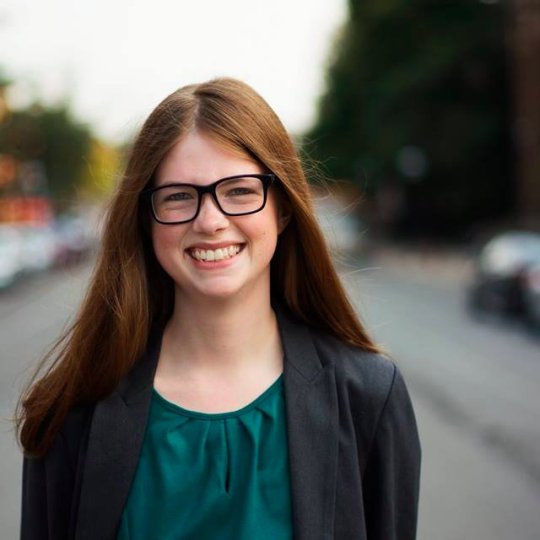
Ashley is a queer and disabled individual who shares her experiences with both her identities and the intersections of being queer and disabled.
Ashley has had cerebral palsy her entire life and was 13 years old when she realized she was queer. She speaks about identifying with two marginalized groups at the same time and learning about how both her identities relate to and connect with each other. With Ashley’s experiences growing up, she did not have many role models who identified as both queer and disabled. Therefore, her own personal experiences have allowed her to learn about the intersections that do exist which she has labelled into five categories: Isolation, Dating, Fashion, Coming Out, and Pride and Acceptance.
Isolation: Ashley describes how being both queer and disabled, in most cases, are not identities that one shares with their family. Race, class, and religion are marginalized identities that are often shared with your family. However, in Ashley’s case, she was the only disabled and queer individual in her family, leading her to feel lonely and isolated. With having a family that identifies with the same identity, one is able to have a community that allows them to grow into their identities. Ashley was forced to learn about her identities by herself as it was something her family could not understand.
Dating: In her experiences with dating, Ashley shares how she had to resort to gay bars and clubs to find someone to date. In these spaces she felt that she needed to dance to gain someone’s attention, which was impossible for her to do. Moreover, these bars and clubs were not accommodating or accessible for her disability. She shares that she felt her disability was isolating her from the only queer places available.
Fashion: As someone with cerebral palsy, Ashley found it difficult to wear dresses, flats, put on makeup, and shave. It forced her to wear lace up shoes, blazers, shirts and pants. This presented her to be labelled as “butch” which impacted who paid attention to her and who did not in the lesbian community. Ashley states that the “limitations of [her] disability automatically categorized [her] into certain gender roles within the queer community.”
Coming Out: Since her cerebral palsy is not visible to strangers, Ashley shares that both her identities had to have some process of her coming out. She states that as a child she was more afraid of coming out as lesbian over having a disability, but as she got older, she feels more fearful of coming out as someone with a disability.
Pride and Acceptance: Lastly, Ashley shares how her sexuality and disability are both not seen as “normal” by society. Both identities are marginalized and discriminated against. However, she shares that both these identities were a part of her and therefore, she learned to accept her identities, advocate for her identities, and love her identities. Being both queer and disabled has allowed Ashley to be strong, courageous, resilient, empathetic, supporting, loving, have a passion for social justice and equity, and be the best version of herself.
Source: https://themighty.com/2017/04/intersections-of-being-queer-and-disabled/
0 notes
Text
Queerness & Disability in Sports
The sports industry is a reflection of the ableism that exists in our current society. There are millions, even billions, of viewers who tune in to watch the FIFA World Cup, Super Bowl, Cricket World Cup, Olympics, and many more sporting events. Most of these events are catered towards able-bodied athletes, denying visibility for athletes living with disabilities. In addition, the media never fails to exploit these sporting events and the sports industry capitalizes on its publicization of athletes, brand deals, and commercials. What has gone unheard of in the media are athletes with disabilities. Despite its viewership attention, the media fails to portray Paralympic and Special Olympic athletes in the same way they publicize their able-bodied athletes.
Adam Rippon and Gus Kenworthy garnered media attention back in 2018 for being the first openly gay athletes participating in the Olympics (Eguchi, 2019, p.128). They were celebrated for their sexuality and invited on guest shows such as Ellen as pioneers for openly gay athletes. However, in 2016 there were 12 known athletes competing in the Rio Paraolympics that were openly queer (Outsports, 2016). Athletes such as Abby Dunkin and Moran Samuel were not household names like Adam and Gus, despite being as talented in their respective sports and being openly queer. Pictures such as the one below demonstrate the privilege held by able-bodied athletes over athletes with disabilities for visibility in the media.
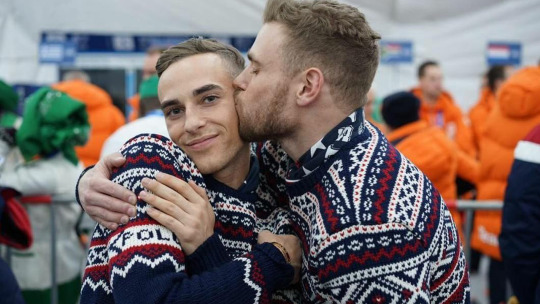
Abby Dunkin stated in an interview that being queer and having a disability is like being ‘two minorities at once’ (Barros, 2016). Not only is it rare to be an athlete living with disabilities in the sports industry, but even more so to gain brand sponsorships for being queer. Eguchi (2019) argues that although Adam Rippon pushes the boundaries of the heteronormativity and homophobia displayed in sports, Rippon is still a physically able-bodied, white, cis-male, who holds priviledge for being that (p.129). He does not have to compete in an Olympic series that attracts less media attention like the Paralympics. Kenworthy also had corporate sponsors who actively supported his coming out journey. (Eguchi, 2019, p. 129). These two openly gay athletes had the publicity and attention for being able-bodied athletes in society, and therefore had more opportunities and sponsorships to come out as queer. Athletes living with disabilities such as Abby Dunkin may not have those opportunities and adding on another minority such as being queer could potentially lower her chances for sponsorships. The reality is that the sports industry favours able-bodied athletes that are “fit” and “healthy”, and that being queer makes it harder to adapt to an industry built on a history of heteronormative practices.
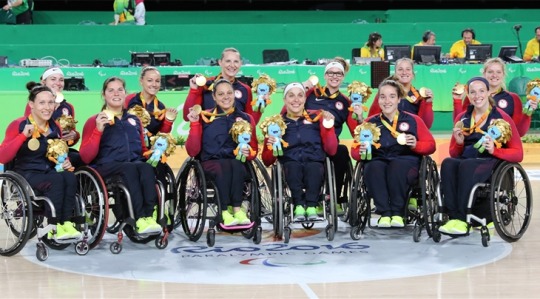
References
Barros, N. (2016, September 19). LGBT Paralympians, 'two minorities at once,' welcome increased visibility. Retrieved from https://www.outsports.com/2016/9/19/12968080/paralympics-rio-lgbt-women-wheelchair-basketball
Eguchi, S. (2019). Intersections among Queerness and Disability: A Case of Out at the Olympics. QED (East Lansing, Mich.), 6(3), 127–135. https://doi.org/10.14321/qed.6.3.0127
Outsports. (2016, September 06). At least 12 out LGBT athletes competing at the Paralympics in Rio. Retrieved from https://www.outsports.com/2016/9/6/12731156/paralympics-lgbt-gay-athletes-out-rio
0 notes
Quote
Try not to be ashamed as you flinch and tremble under her warm hands. Think of the stories you haven’t told yet.
Eli Care, 1992
0 notes
Text
Finding Identity within a Queer and (dis)Abled community.
“Intersectional Invisibility” is the failure to recognize and understand the intersectionality between different races, genders, disabilities and sexuality. It is often hard to identify yourself if you are not someone who fits into the perfect image society forces us to be. It is often a challenge to figure out who we are and where we belong within our communities. Queer and disabilities are two groups of people that often are intersectional yet kept separate through media and communities. It isn’t often that we talk about the intersection of disabilities into many other groups of people as there hasn’t been much research done towards this idea. Mostly, people with disabilities are grouped into their own community and are often forgot about. Since many queer people also have a (dis)ability, it is important to discuss the struggles that they face as well as bringing attention to the discrimination and stereotypes that they face towards both of their identities. Since these two intersections are completely different from one another, it raises the difficulty of finding supportive organizations and movements. Both disabilities and the LGBT community are avid in fighting for equality, it begs the question, how do we intersect these movements without placing all equality issues under one category? Society makes it impossible for you to be both queer and disabled, all these issues intersect yet, society forces them to diverge.
How does a queer, (dis)abled person describe themselves? What is there identity?
Hannah Soyer is someone who identifies as a queer and disabled person. Hannah had embraced queerness and normalized within her mindset, yet she found herself oppressing her disability. Hannah states “While some people who identify as queer feel that being queer is bad and so try to show they are as “normal” as everyone else, others go against this, taking pride in their non-normalcy because normalcy is an oppressive ideal to live under. I recognized this struggle within myself and within the disability community – do I hide the more “disabled” parts of myself to try and pass as “normal,” or am I proud of these characteristics that so clearly set me apart, recognizing that it’s not me who is damaged, but the narrow constraints of what is considered beautiful, celebratory, good?” (Soyer, 2018.)
In our world we are forced to be one thing. Most of the time people want to avoid contemplating situations, therefore these topics are normally ignored. Similar to Hannah Soyer we must begin to embrace these two qualities. The difficulty is to not diminish one over the other but rather to be educated and progressive within each community. Queer and (dis)abled people face much more judgement within our society, therefore it feels easier to hide one or the other. We must strive towards creating a balance within those communities as well as continuing to be progressive and equal as a society.

https://www.myacpa.org/entity/coalition-disability/blog/queering-ability
https://rootedinrights.org/embracing-my-queer-disabled-identity/
0 notes
Photo

Queer and Disabled Icons to follow pt. 3!!
This is Andrew Gurza, he is a disability rights activist, sex educator, and wheelchair-user. He speaks out about ableism and how people with disabilities are often seen as asexual/not interested in sex. Follow him on twitter and instagram at @itsandrewgurza, or visit his website: www.andrewgurza.com. Or click on the links below!!
Instagram: https://www.instagram.com/itsandrewgurza/
Twitter: https://twitter.com/itsandrewgurza?ref_src=twsrc%5Egoogle%7Ctwcamp%5Eserp%7Ctwgr%5Eauthor
His website: http://www.andrewgurza.com/
0 notes
Text
Reclaiming the Terms ‘Queer’ & ‘Crip’!
In order to change society’s negative perceptions of those who are queer and disabled, individuals or groups need to come together to promote positive images of themselves, “to uncover the history of their contributions to society and culture, and re-assert their universal human right to exist: any means, in short, to help them become more visible” (Gupta, 2019). With this being said, the words ‘queer’ and ‘crip’ historically have both been used as a term that is derogatory to those of a different sexual orientations and also those that have disabilities.
Under systems of patriarchy, racism, or heterosexism, those with a different sexual orientation, race or sex that deviate from ‘normal’, are considered handicaps. Similarly, those who are impaired are considered ‘handicap’ not only because of disablism but because it affects the individual to sometimes operate differently which society believes causes them pain and suffering (Gupta, 2019).
Despite the negative connotations surrounding the terms ‘queer’ and ‘crip, many people today have been reclaiming these terms as a way to shift the narrative from negative to positive, in addition to creating a statement to everyone that they’re proud.
Here is Dr. Ranj Singh a distinguished figure, on his account of what ‘queer’ means for him today:
“I grew up in a time when queer was only ever used as an insult. For some people, it sadly still is. But I feel strangely lucky that I’ve lived to see a time where words that once caused so much pain, can be completely reborn. These words have become terms of positive identification and even celebration. I’m proud to be queer. I didn’t ever think I would say that. Reclaiming words of pain and using them for power is vital if we are to grow as a society. It’s a way of undoing some of the damage that they have done. We owe that to those who have gone before us and suffered because of them. And it sends a new message out to the world we are in today: never again will this word be used to harm. Queer, to me, now means the freedom to express yourself and to express your love in a way that you choose. It means not having to live by labels. It represents progress. But at the same time, it should remind us of the struggles that some people still go through. It should remind us of people who have lost their lives and livelihoods simply for daring to be themselves. And it should remind us that we still have responsibilities to each other and the community” (Corner, 2019).

Sources: https://aeon.co/essays/does-using-crip-like-queer-empower-disability-activismhttps://www.gaytimes.co.uk/life/reclaiming-the-word-queer-what-does-it-mean-in-2019/
0 notes
Photo

Queer and Disabled Icons to follow pt. 2!!
This is Chella Man, he is a queer and disabled rights activist, model, actor, and vlogger who identifies as deaf, transgender, genderqueer, and Jewish/Chinese. He is most known for speaking out about his experiences transitioning while being deaf.
You can find him on youtube and instagram @chellaman, or just follow the links below
Instagram: https://www.instagram.com/chellaman/?hl=en
Youtube: https://www.youtube.com/channel/UCa1vUXV2WMRobPo-ZfEeRhg
2 notes
·
View notes
Photo
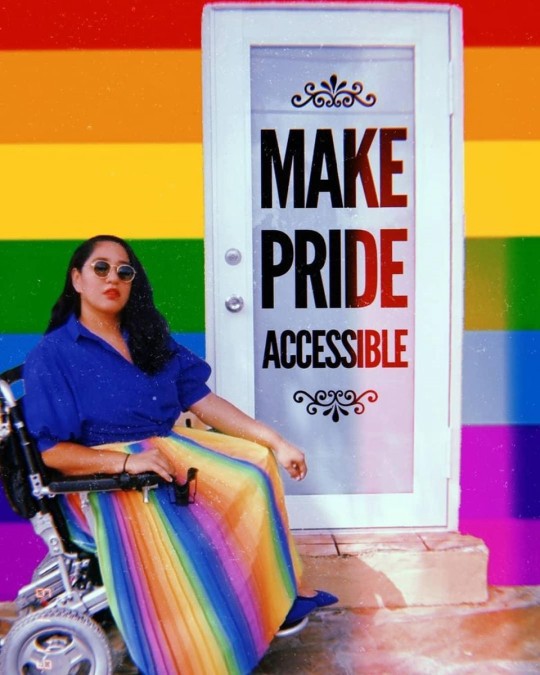
Queer and Disabled Icons to follow Pt. 1!!
This is Annie Segarra, the creator of #TheFutureisAccessible, a disability rights movement. Annie is an avid supporter of queer and disabled rights. She identifies as queer and Latinx, she also has Ehlers-Danlos syndrome.
You can find her on instagram, tumblr, and twitter at @annieelainey, or on youtube as Annie Elainey
or just follow these links!
Twitter: https://twitter.com/annieelainey?ref_src=twsrc%5Egoogle%7Ctwcamp%5Eserp%7Ctwgr%5Eauthor
Instagram: https://www.instagram.com/annieelainey/?hl=en
Tumblr: https://annieelainey.tumblr.com/
Youtube: https://www.youtube.com/channel/UCznS4Pk3VcTIfDUuWrQtdzQ
0 notes
Text
How Social Media Can Empower Queer People with Disabilities
Social media is one way in which queer individuals with disabilities can reclaim their voices and represent themselves in more positive ways. One study by Miller focused on how university students who identified both as part of the LGBTQ+ community and as disabled, used social media to explore their identities, seek validation, get involved in the queer disability community, and manage their identities contextually (509). So in this way, social media benefits the queer disabled community by allowing them options that would otherwise be unavailable to them. However, social media can also be harmful, as people online aren't always kind or open to people who don't fit the norm. While social media can be a tool used to empower oneself, it also leaves you vulnerable to attacks from others. Social media can also be used as a tool for activism, through social media, awareness about issues pertaining to disability and queerness can be increased through making and sharing posts. Social media can also be used to plan events and meet others who share similar backgrounds.
Source: https://www.researchgate.net/publication/318110987_My_Voice_Is_Definitely_Strongest_in_Online_Communities_Students_Using_Social_Media_for_Queer_and_Disability_Identity-Making
0 notes
Photo
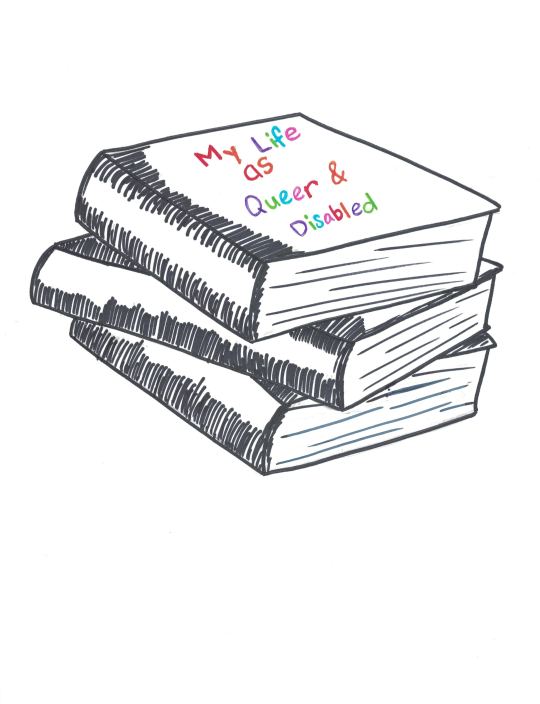
This drawing represents the lives of queer and disabled individuals, and the many stories that lie within them. It represents the different experiences they face when coming out as queer and disabled. Coming out is not only a process of understanding and accepting oneself, but valuing one’s sexual identity as well. Although this difficult, but liberating process embodies courage and strength, oftentimes these individuals are criticized for who they are. Everyone has a different story to tell, therefore it is wrong to judge someone based on what is seen on the surface.
0 notes
Photo

Here’s a lil’ hub of resources and links that you can turn to if you’re interested in some further educatin’ or want to support more individuals in the community!
Art made by queer & disabled individuals!
Wheelchair Sports Camp
Rapper, musician
Pree Rehal
Uses art as a healing practice
Wy Joung Kou
Multi-disciplinary artist, mosic maker
Kate Welsh
Artist who also provides counselling
Support resources, organizations & communities!
COVID-19 Isolation Relief Support Line
Operated under the values of disability justice
Chronically Queer
A support group for Queer folk with chronic health conditions
QMUNITY
A safe space for queer, trans, and Two-Spirit individuals with free counselling and youth one-on-one peer support
Creating Accessible Neighbourhoods
QMUITY’s chronically queer support group in Vancouver
Deliciously Disabled
An awareness campaign about the intersection of disability & sexuality
Petitions to sign & further resources because we’re all in this together! :)
Ways To help: Black Lives Matter
0 notes